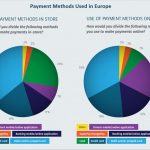
Loyalty cards have been around for decades, but over the past couple of years there has been something of an evolution in the biggest UK schemes. While previously shoppers would rack up points on their spending that they could later cash in for rewards, several major retailers have switched to offering upfront benefits. The loyalty schemes of Tesco, Sainsbury’s and Boots are among those that have effectively become clubs and, if you’re a member, you get products cheaper when you do your shopping online or in-store. Other retailers still offer conventional schemes, where you can earn vouchers to use on shopping or other treats. At a time when money is tight and bills are rising, it’s worth considering any opportunity to save. If you play your loyalty cards right, this might be one.
Should we all be using loyalty cards?
Naomi Willis from the money-saving website Skint Dad thinks so. As she says, you can often get digital versions of the cards, or give your email address when you pay, so you do not have to have them cluttering up your wallet in order to benefit. She says it’s always worth signing up if you are offered a card, “even if you only shop there a few times a year, as you can take advantage of new member discounts, and many also offer a free gift on your birthday”. The bakery chain Greggs, which offers one of her favourite schemes, promises a free “sweet treat” each year – on your birthday, you can pick from a range including doughnuts, eclairs and muffins.
Ele Clark, retail editor at the consumer group Which?, says it’s worth signing up to schemes offered by shops you already use as, in some cases, you will make considerable savings. Clark says that research by Which? “shows shoppers could save between 50p and £10 for every £100 they spend with loyalty schemes.”
If you shop at Tesco, Sainsbury’s, Lidl, Superdrug or Boots, not having a loyalty card is very likely to mean you pay more for a basket of goods. Currently, Tesco has more than 8,000 products that are cheaper for holders of its Clubcard, while Sainsbury’s has more than 3,500 items with lower “Nectar Prices”.
The deals change regularly – like most supermarket offers – but at Tesco having a loyalty card has recently meant £2 off Persil and own-brand clementines at £1 instead of £1.35, and Sainsbury’s have offered half-price Royal Gala apples. At Boots, there is 10% off every own-brand product and some other offers, such as £4.50 off Sanctuary Spa Shower Oil. Superdrug Members prices currently include 50% off a range of Colgate toothpaste, while those with the Lidl Plus app can get 20% off a children’s sandpit among other offers.
Marks & Spencer has been trialling the same at some of its food halls. Until mid July, Sparks card customers at 49 stores across South Wales, the North East and West Midlands were offered discounts on a range of products. A bottle of Prosecco, for example, was reduced from £10 to £8 and there was £2 off some meal deals. It hasn’t been decided if this will be rolled out nationally.
These schemes also let you accrue points, which you can either spend with the retailers or exchange for other offers. Most have made that side less generous – at Boots, you can now earn 3p worth of points for every £1 spent, instead of the previous 4p, while until mid-June Tesco let you treble points to use with its partners, but now it only lets you double them.
But the rewards really are a bonus now, and the discounts the main event.
Willis highlights Iceland’s Bonus Card scheme as another of her favourites. It’s quite different to the others in that you can load it with money and then use it to pay in its shops or online (with free delivery). For every £20 you put on it, you get an extra £1 to spend – effectively you’re getting 5% off your shopping, whatever you buy. “If you know you’ll be shopping at Iceland anyway, it’s an easy way to get free money,” says Willis.
Beyond these schemes it’s worth checking out the benefits before you sign up, because with some schemes the rewards are less impressive and you will need to weigh them up against the hassle of swiping the card and the ramifications of giving away some of your data.
How can I get the best out of loyalty schemes?
When it comes to maximising what you collect, Clark advises keeping an eye out for the chance to earn bonus points. In the case of Morrisons’ More scheme, for example, these are advertised on shelves and online – at the time of writing, a block of Morrisons’ Davidstow cheese came with 400 extra points. The scheme turns every 5,000 points into a £5 voucher, so that’s effectively 40p you get back.
In some schemes, bonus points vouchers are sent by post and you need to take in a voucher and swipe it – and at some retailers, including Sainsbury’s, these are supplemented with vouchers given out when you pay.
Most retailers that operate petrol stations offer multiple points for filling up your car, plus there are often incentives for downloading a retailer’s app and using it to do your shopping.
If the scheme is one that gives you a choice of how to redeem your points or rewards, do some careful research before you cash them in.
How do I compare schemes?
This is tricky. While retailers will usually tell you how many points you will earn per pound spent, they do not all make it clear how much those points are worth. And even where they do, the generosity of bonus points is unknown before you sign up, and retailers are at pains to point out that rewards can be changed.
Which? and Skint Dad both have online comparison tables. These go into the basics and save you the legwork of looking at individual retailers’ terms and conditions.
But, if in doubt over whether a scheme is worthwhile, your best bet is to get a card and see if it ever returns anything. If, after a year, you’ve got nothing to show for it, you might as well ditch it.
Can they cost you money?
The answer is yes, if you are led into spending at a shop purely because you have its loyalty card and don’t keep an eye on prices. Clark says that “people probably shouldn’t change their shopping habits just to earn points”. Even if bonus points are on offer, you should still shop around. Some shops that don’t have loyalty schemes offer competitive prices on household goods. Wilko, for example, is offering an 800g bag of Purina cat food at a lower price than is available elsewhere even with a loyalty card.
What am I giving away?
One reason to say no to a loyalty card in the face of all these offers is the knowledge that you don’t get anything for nothing; in exchange for the discounts and rewards, you are giving away your data.
Geoff Lloyd, director of retail at IT consultancy NTT DATA UK&I, says it’s understandable that customers are sensitive about sharing personal data, and that’s why there are clear rules in place on how retailers gather, store and use it. “The UK version of GDPR [General Data Protection Regulation] demands that loyalty card providers are transparent about their algorithms’ use of customer data,” he says. When you sign up for a loyalty scheme, the terms and conditions should outline what the retailer will do with the information and how it will protect your privacy.
Lloyd says that retailers can process your data once you have given consent, but if a programme “collects ‘special categories’ such as [details of] ethnicity or health” the retailer will have to get your explicit consent to use it.
“Some retailers may share or sell data to third parties to personalise advertisements and support other targeted marketing efforts,” he says. “On the other hand, retailers such as Waitrose place a stronger emphasis on data protection and don’t sell it to third parties.”
Of course, sharing data about what you buy and how you shop might not be all bad. Toby Pickard, Global Insight Leader at IGD says the information “presents a way to learn about shopper and consumer behaviour in detail, which helps retailers and suppliers create more relevant products and hopefully improve the overall shopping experience.”
What about small retailers?
Pickard says that “to be loyal, shoppers must feel like they are genuinely receiving a benefit. This is where loyalty schemes are somewhat lacking; shoppers are failing to see an authentic return on their loyalty, and this is causing apathy.”
The changes to the big schemes do seem to have shifted the dynamic a little, so it can feel more like you’re being punished for not having a card than rewarded for being a loyal customer.
The offers from small retailers – stamps for coffees at the local cafe, with no data changing hands – are probably most likely to engender genuine loyalty, and to give you a warm feeling when you cash them in.



